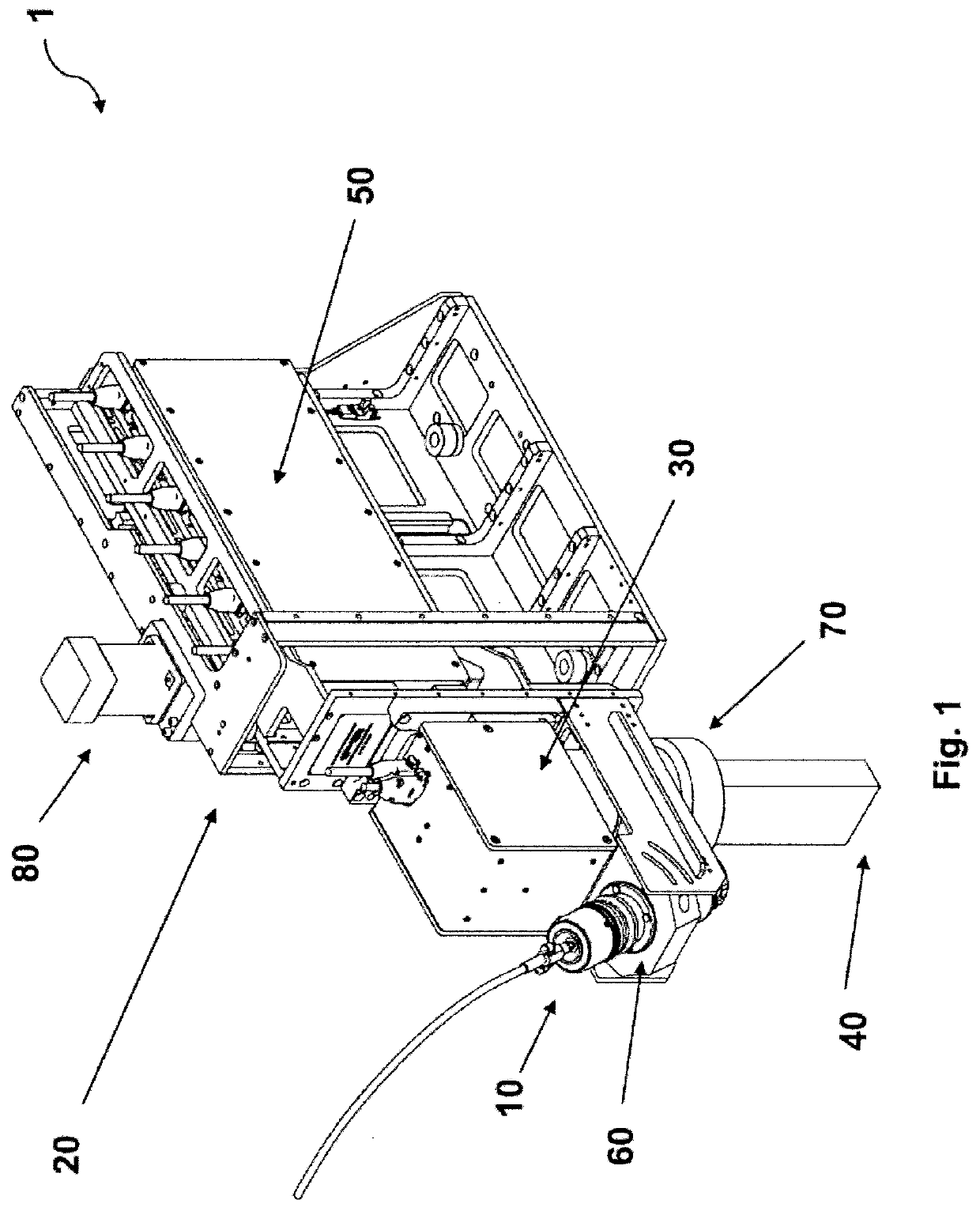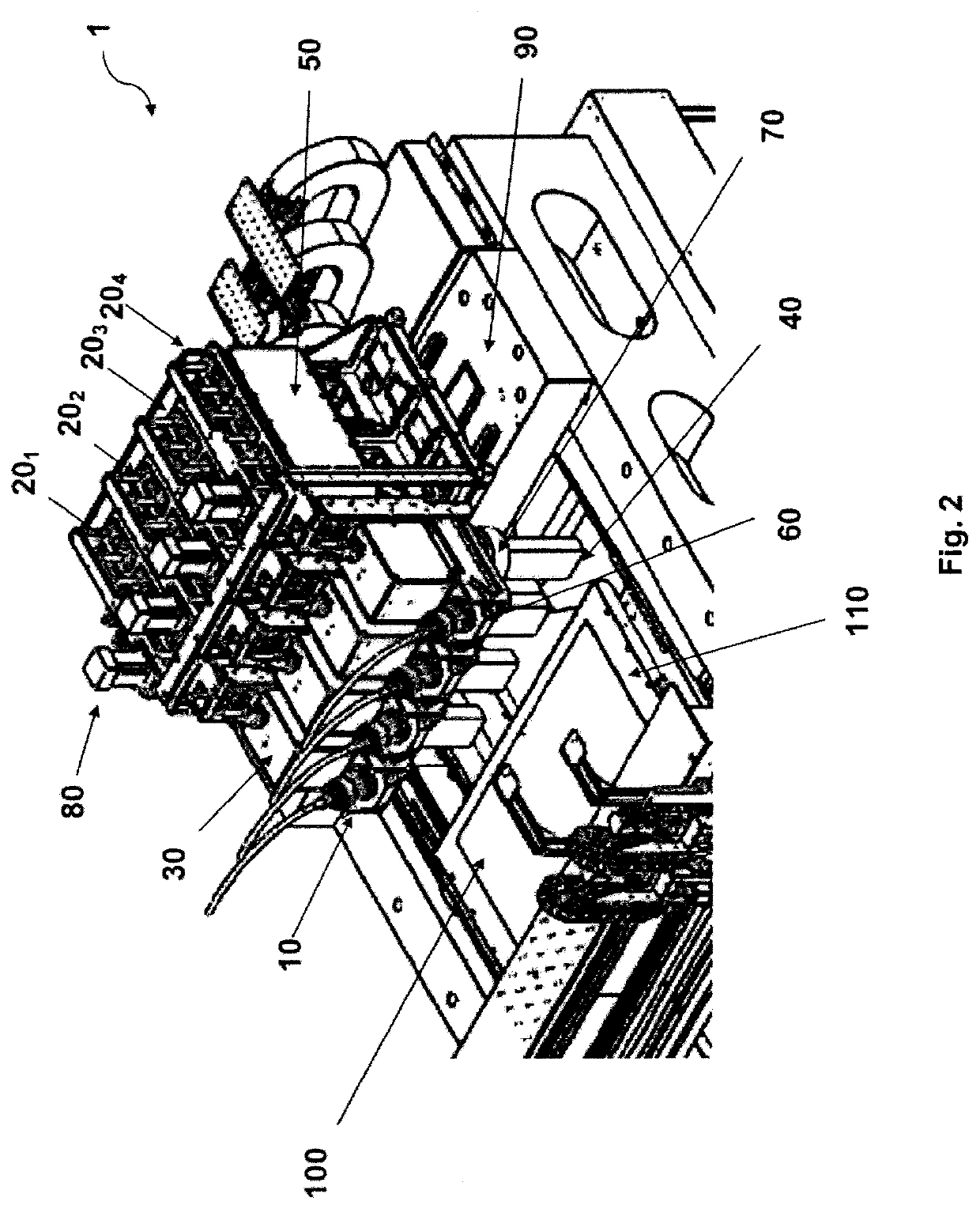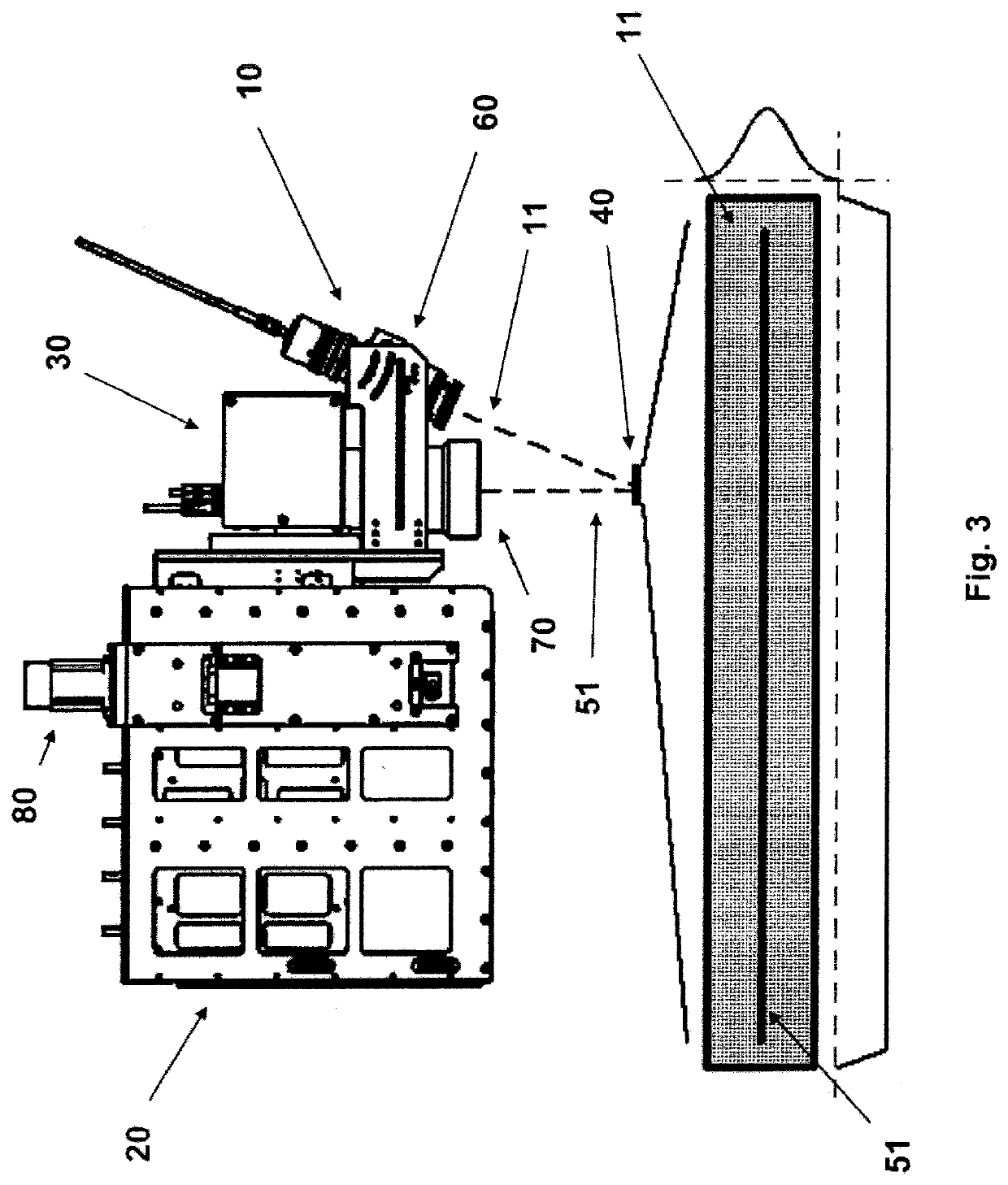Direct Exposure Device for the Direct Exposure of Solder Resists in a 2-Dimensional, Quickly Temperature-Controlled Environment
a technology of direct exposure and solder resist, which is applied in the direction of double exposure, circuit masks, instruments, etc., can solve the problems of high power loss, indefinable non-linear scaling of masks, and image defects of solder resists
- Summary
- Abstract
- Description
- Claims
- Application Information
AI Technical Summary
Benefits of technology
Problems solved by technology
Method used
Image
Examples
Embodiment Construction
[0086]FIG. 1 shows a perspective view of a direct exposure device 1 (in the following also referred to as lithographic exposure device) comprising an exposure device 20 and an external heat source device 10. The heat source device 10 can be mounted to the exposure device 20, for example, via an adjustment device 60.
[0087]This assembly preferably comprises a laser diode module comprising coupling optics 50 with transmitting laser light beams in the ultraviolet spectral range of 350 nm-450 nm.
[0088]Preferably the coupling takes place within the laser module and is performed by optical elements from the prior art. To this end, for example, pole cubes and semipermeable mirrors as well as other combination optics are used. Preferably, lasers having discrete single-mode wavelengths with different main maxima are coupled or combined in the coupling optics 50. For example, the light beams of three laser sources with main maxima at about 375 nm, 390 nm and 405 nm can be coupled.
[0089]The ind...
PUM
| Property | Measurement | Unit |
|---|---|---|
| wavelengths | aaaaa | aaaaa |
| temperature | aaaaa | aaaaa |
| size | aaaaa | aaaaa |
Abstract
Description
Claims
Application Information
 Login to View More
Login to View More - R&D
- Intellectual Property
- Life Sciences
- Materials
- Tech Scout
- Unparalleled Data Quality
- Higher Quality Content
- 60% Fewer Hallucinations
Browse by: Latest US Patents, China's latest patents, Technical Efficacy Thesaurus, Application Domain, Technology Topic, Popular Technical Reports.
© 2025 PatSnap. All rights reserved.Legal|Privacy policy|Modern Slavery Act Transparency Statement|Sitemap|About US| Contact US: help@patsnap.com



